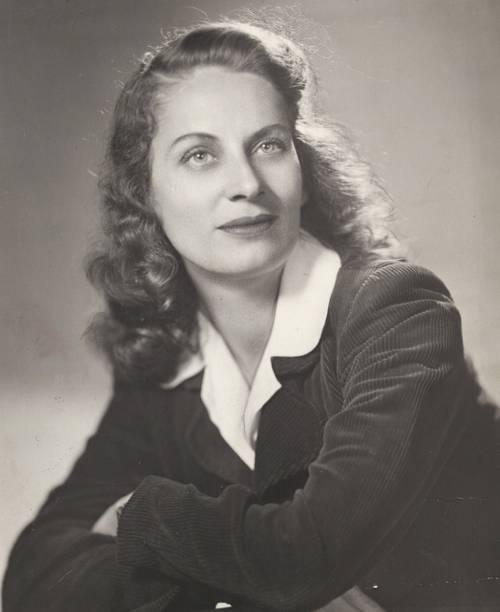
FAQ About Gabrielle Roy

Who is Gabrielle Roy?
Gabrielle Roy was a renowned Canadian author, born on March 22, 1909, in Saint Boniface, Manitoba, and passed away on July 13, 1983. She is celebrated for her works that deeply explore themes of family, identity, and the human condition, often reflecting the Canadian experience. "The Tin Flute," her first novel, received international acclaim and has contributed to Canadian literature's global reputation.

What are some of Gabrielle Roy's most famous works?
Gabrielle Roy's most famous work is "The Tin Flute" (Bonheur d'occasion), published in 1945, which earned her immediate recognition and the Governor General's Award. Other notable works include "Where Nests the Water Hen," "The Cashier," and "Street of Riches." Each of these works showcases her narrative style and her focus on Canadian life and society.

What themes did Gabrielle Roy commonly explore in her writing?
Gabrielle Roy often explored themes related to identity, family, and the human experience. Her writing frequently delved into the struggles of ordinary people, capturing their desires, challenges, and resilience. Socioeconomic issues, the role of women in society, and the complexities of cultural identity are also prevalent in her works, offering profound insights into Canadian and universal human experiences.

Why is Gabrielle Roy significant in Canadian literature?
Gabrielle Roy is significant in Canadian literature for her detailed and empathetic portrayal of Canadian society. Her work highlighted the lives of common people with depth and understanding, intertwining their personal experiences with broader social and cultural issues. Her storytelling helped elevate Canadian literature on the world stage, showcasing the cultural and linguistic diversity of Canada.

What awards did Gabrielle Roy receive for her writing?
Gabrielle Roy received numerous prestigious awards throughout her career. Most notably, her novel "The Tin Flute" won the Governor General's Award for Fiction in 1947. She was also awarded the Royal Society of Canada's Lorne Pierce Medal and France's Prix Femina, among others, which underscore her exceptional contribution to both Canadian and international literature.

How did Gabrielle Roy's upbringing influence her work?
Gabrielle Roy's upbringing in Saint Boniface, Manitoba, a region with a rich Francophone heritage, significantly influenced her writing. Growing up in a bilingual environment allowed her to capture the linguistic and cultural nuances that define much of her work. Her rural and modest background provided her with insights into the struggles and aspirations of ordinary people, themes that are prevalent throughout her literary career.

What was Gabrielle Roy's writing style?
Gabrielle Roy is known for her lyrical and detailed prose that intricately describes both her characters' inner experiences and their external environments. Her style is deeply empathetic and vivid, often highlighting the emotional and social realities of everyday life. By weaving complex character studies into her storytelling, she created works that deeply resonate with readers, capturing the essence of Canadian life.

Where can I find Gabrielle Roy's works today?
Gabrielle Roy's works can be found in many libraries and bookstores, both in Canada and internationally. Her most popular books, such as "The Tin Flute", are often available in various formats including print, digital, and audio. Online retailers and platforms like Amazon or Kobo also offer her books for purchase and download.

Was Gabrielle Roy's work ever adapted into other media?
Yes, Gabrielle Roy's work has been adapted into other media formats. Most notably, her novel "The Tin Flute" was adapted into a film in 1983. These adaptations have extended the reach and influence of her stories, allowing them to be appreciated by broader audiences and highlighting the timelessness and universal appeal of her themes.

How did Gabrielle Roy contribute to the depiction of Canadian culture in literature?
Gabrielle Roy contributed to the depiction of Canadian culture by authentically portraying the lives, struggles, and dreams of Canadians, especially those in the francophone community. Her stories often reflected the multicultural tapestry of Canada, the socio-economic challenges faced by its people, and the unique identity struggles in bilingual environments. This has helped foster a deeper understanding and appreciation of Canadian culture and identity in literature.

What impact did "The Tin Flute" have on Canadian literature?
"The Tin Flute" had a profound impact on Canadian literature by bringing international attention to Canadian narratives. The novel's success demonstrated the richness of Canadian storytelling and its relevance to universal human experiences. It elevated Gabrielle Roy's standing as a key figure in literature and opened doors for other Canadian writers seeking to present local stories with global relevance.

What languages did Gabrielle Roy write in?
Gabrielle Roy primarily wrote in French, but many of her works have been translated into English and other languages. Her ability to depict the bilingual and multicultural facets of Canadian life allowed her stories to resonate with a wide audience, both within Canada and internationally. English translations have helped her reach readers beyond the Francophone community.

Did Gabrielle Roy address any social issues in her works?
Yes, Gabrielle Roy often addressed social issues such as poverty, women's rights, and cultural identity in her works. Through her characters and narratives, she highlighted the socio-economic challenges faced by individuals and families, particularly in the Canadian context. Her insights into these topics contributed to a greater awareness and understanding of the social dynamics of her time.

Where did Gabrielle Roy live throughout her life?
Gabrielle Roy was born in Saint Boniface, Manitoba, and spent a significant portion of her life in this community, which deeply influenced her work. She later moved to Quebec and also spent time in Europe, including France, enhancing her literary influences and perspectives. These diverse experiences enriched her storytelling, offering broader cultural insights in her writing.

Did Gabrielle Roy have any formal literary training?
Gabrielle Roy did not have formal literary training but pursued studies in education at the Winnipeg Normal Institute. Her literary journey was largely self-taught, shaped by her experiences and the environments she lived in. Her natural talent and deep understanding of human emotions and societal dynamics allowed her to craft profound and engaging narratives.

What influence did French-Canadian culture have on Gabrielle Roy's writing?
French-Canadian culture had a profound influence on Gabrielle Roy's writing. Her immersion in the Francophone community of Saint Boniface provided her with rich cultural narratives and linguistic skills that she skillfully wove into her storytelling. Her works often reflected the dual cultural dynamics of Canada, portraying the unique challenges and identity struggles of French Canadians.

How did Gabrielle Roy's career begin?
Gabrielle Roy's career began in earnest after she moved to Montreal in 1939, where she initially worked as a freelance journalist. Her foray into novel writing led to the publication of her first novel, "The Tin Flute," in 1945, which was a critical success and launched her prolific writing career. This work established her as a prominent voice in Canadian literature.

What is the legacy of Gabrielle Roy in Canadian literature?
The legacy of Gabrielle Roy in Canadian literature is one of empathy, cultural richness, and profound human insight. Her ability to capture the nuances of Canadian life and her exploration of universal themes have left a lasting impact. Her works continue to be studied and celebrated for their contribution to understanding Canadian identity and storytelling.

What educational background did Gabrielle Roy have?
Gabrielle Roy attended the Winnipeg Normal Institute where she trained as a teacher. Her educational background in teaching influenced her attention to detail and character development in her works, although her literary accomplishments were achieved mostly through her personal dedication and talent rather than formal literary education.

Did Gabrielle Roy write any autobiographical works?
Yes, Gabrielle Roy wrote autobiographical works. Her memoir, "Enchantment and Sorrow," published posthumously in 1984, provides insights into her life experiences and personal reflections. This work, like her novels, is rich with her deep emotional insights and reflections on identity, further contributing to her legacy in Canadian literature.
